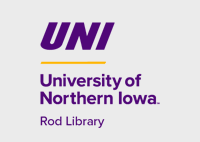Dissertations and Theses @ UNI
Availability
Open Access Thesis
Keywords
People with disabilities--Means of communication; People with disabilities--Rehabilitation; Teleconferencing;
Abstract
Augmentative and alternative communication (AAC) implementation and intervention continues to be a critical component of the speech-language pathology scope of practice (ASHA,2020a). As communication has be come increasingly technological, there is a growing need for individuals using AAC to participate remotely using their preferred method of AAC (DeRuyter et al., 2007). Research on use of low-tech AAC systems in telecommunication and the instruction of low-tech communication AAC methods via telepractice is limited. This paper focuses on participants’ experience with learning a modality of communication, low-tech AAC,over Zoom (Zoom Communications Video Communications Inc.,2020). Using a descriptive-comparative design to evaluate efficiency, three participants, who were non-users of AAC, learned , utilized, and reported preferences of low-tech methods of Eye-Transfer (E-Tran) or Partner-Assisted Scanning (PAS), in a 90-minute session. Participants used the methods in the role of the person using AAC first, and then as the communication partner. Method efficiency was evaluated by comparing duration of messages, spelling accuracy, and user preferences amongst participants. The results indicated E-Tran was faster than PAS for two participants who tried both methods. The two participants who tried both methods also had higher accuracy using PAS and preferred PAS over all in the telecommunication setting.
Year of Submission
2020
Degree Name
Master of Arts
Department
Department of Communication Sciences and Disorders
First Advisor
Evette Edmister, Chair
Date Original
2020
Object Description
1 PDF file (vi, 42 pages)
Copyright
©2020 Brittany Davis
Language
en
File Format
application/pdf
Recommended Citation
Davis, Brittany, "Efficiency of low-tech augmentative and alternative communication (AAC) access methods" (2020). Dissertations and Theses @ UNI. 1067.
https://scholarworks.uni.edu/etd/1067



